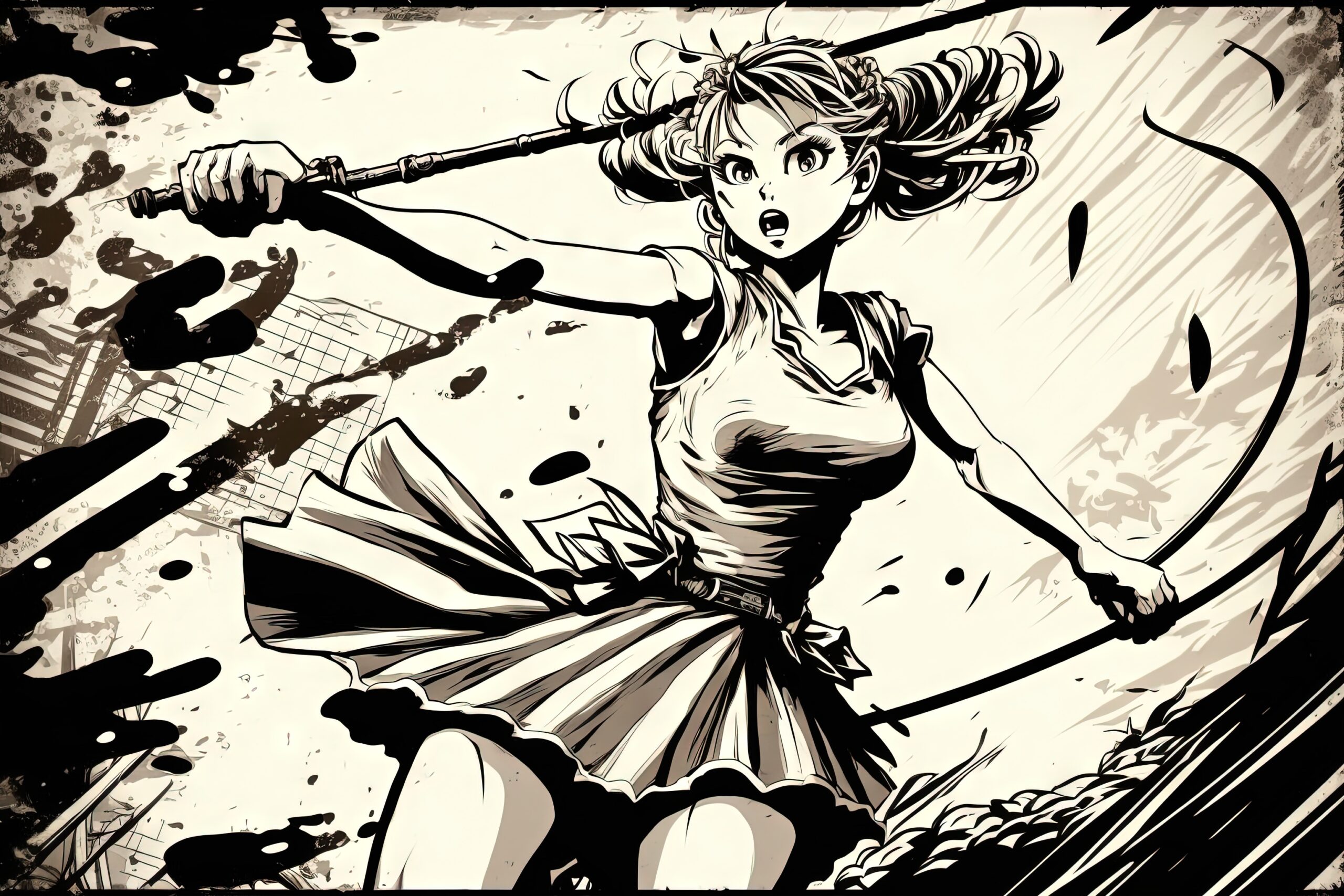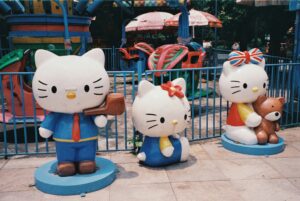The world of manga offers a rich tapestry of storytelling, art, and cultural significance, drawing readers from diverse backgrounds. Over the decades, certain titles have risen to prominence, achieving remarkable sales figures that reflect their widespread popularity and enduring appeal. This article delves into the top best-selling manga of all time, examining what constitutes success in the manga industry and exploring the narratives that have captured the hearts and imaginations of millions.
Unveiling the World of Best-Selling Manga: An Overview
Manga, a form of Japanese comic or graphic novel, has become a cornerstone of global pop culture. Spanning a wide array of genres—from action-packed shonen stories to poignant slice-of-life tales—manga appeals to a broad audience. The best-selling titles not only achieve high sales figures but also influence trends, inspire adaptations, and cultivate passionate fan bases.
The phenomenon of best-selling manga is not merely a reflection of sales numbers; it encompasses cultural significance and the ability to resonate with readers on emotional levels. Many of the most successful series have introduced complex characters, intricate plots, and unique artistic styles that push the boundaries of traditional storytelling.
In Japan, manga is typically sold in serialized form through magazines, with volumes published later as tankobon. Global markets have embraced this format, leading to translations and adaptations that extend the reach of these stories even further. The international popularity of manga has led to conventions, merchandise, and a thriving online community that enhances the experience for fans.
The world of manga continues to evolve, with the rise of digital platforms changing how readers access their favorite series. These platforms have also enabled new creators to gain visibility, allowing fresh voices to enter the landscape. As we explore the top best-selling manga, it’s essential to understand both the historical context and the current trends shaping this dynamic industry.
The Criteria Behind Manga Sales: What Counts as Success?
Measuring the success of manga can be multifaceted, involving various criteria beyond sheer sales numbers. While total volume sales are often the primary metric, other factors such as cultural impact, ongoing adaptations, and merchandising potential also play crucial roles. The longevity of a series, measured by its serialization period and ability to engage readers over time, is another important aspect of its success.
Sales figures are typically reported in terms of copies sold, often including both physical and digital formats. However, the distinction between domestic and international sales can also be significant. A series that performs well in Japan may not see the same success abroad, and vice versa. This is where the global appeal of certain titles becomes noteworthy, as some series achieve worldwide acclaim and find new audiences across different cultures.
Additionally, the presence of anime adaptations can significantly boost manga sales. When a manga is adapted into an animated series, the increased visibility often leads to a surge in readership, as fans seek to explore the original source material. This symbiotic relationship between anime and manga signifies a broader trend where multimedia storytelling enhances the reach of both forms.
Merchandising is another key component of success in the manga industry, with popular series often spawning an array of products ranging from figurines to apparel. This not only generates additional revenue but also solidifies a franchise’s place in popular culture. The cumulative effect of these factors ultimately shapes what it means for a title to be considered a best-selling manga.
The Titans of Manga: A Look at the All-Time Best-Sellers
As we delve into the realm of best-selling manga, several titles stand out as titans in the industry—series that have transcended their original formats to become cultural icons. Each of these best-sellers has its unique qualities, from storytelling and character development to artistic innovation.
At the forefront is "One Piece," created by Eiichiro Oda, which has amassed staggering sales figures over its decades-long run. Following closely are other giants like "Naruto," "Dragon Ball," and "Attack on Titan," each of which has significantly influenced the genre and left an indelible mark on fan communities worldwide.
The emergence of digital platforms and globalization has opened new avenues for these series, allowing them to reach audiences far beyond their origins. The best-selling manga represent not only commercial success but also the cultural narratives that resonate with readers in various contexts.
Understanding the legacy of these titles requires a closer examination of their themes, character arcs, and artistic styles. Each of these series has introduced innovative concepts and has often redefined the genre, inspiring countless creators and paving the way for future generations of manga artists.
"One Piece": A Grand Adventure That Captivates Generations
Since its debut in 1997, "One Piece" has become synonymous with manga’s potential for storytelling. The tale of Monkey D. Luffy and his quest to become the King of the Pirates has captivated audiences with its rich world-building and diverse cast of characters. Oda’s ability to intertwine humor, adventure, and heartfelt moments has allowed "One Piece" to resonate with readers of all ages.
What sets "One Piece" apart is its commitment to character development. Each crew member of the Straw Hat Pirates has their unique backstory, dreams, and motivations, making readers invested in their journeys. The themes of friendship, perseverance, and the pursuit of dreams create an engaging narrative that has maintained interest for over two decades.
The series’ expansive world is filled with intricate lore, captivating islands, and formidable foes, inviting readers to explore alongside Luffy and his friends. Oda’s masterful storytelling includes unexpected twists and emotional depth that keep fans eagerly anticipating each new chapter.
The adaptation into an anime series has further propelled "One Piece" into global stardom, with numerous films and merchandise reinforcing its cultural significance. The series’ remarkable longevity and continued relevance in the ever-evolving manga landscape highlight its status as a monumental achievement in storytelling.
"Naruto": The Rise of a Ninja and Its Lasting Legacy
"Naruto," created by Masashi Kishimoto, emerged as a defining series in the manga landscape during the early 2000s. The story of Naruto Uzumaki, a young ninja seeking recognition and acceptance, struck a chord with readers who identified with his struggles. Kishimoto’s exploration of themes such as loneliness, ambition, and the bonds of friendship made "Naruto" a profound narrative that resonated deeply.
The series introduced a rich world of ninjas, unique abilities, and complex characters who faced moral dilemmas and personal growth. The character development in "Naruto" is particularly noteworthy, as characters evolve and reveal different facets of their personalities, creating an engaging dynamic.
Kishimoto’s storytelling is complemented by dynamic artwork that captures intense battles and emotional moments, drawing readers into the action. The balance of lighthearted moments with darker themes creates a multifaceted reading experience that appeals to a broad audience.
The success of "Naruto" paved the way for its sequel series, "Boruto: Naruto Next Generations," allowing new generations of readers to continue the legacy. The impact of "Naruto" reaches beyond its pages, inspiring animated adaptations, video games, and merchandise that have solidified its status as a cultural phenomenon.
"Dragon Ball": The Pioneer of Shonen Manga Phenomenon
"Dragon Ball," created by Akira Toriyama, is often regarded as the cornerstone of shonen manga, setting the standard for action and adventure narratives. Initially serialized in the 1980s, "Dragon Ball" follows the adventures of Goku as he trains in martial arts and explores the world in search of the Dragon Balls. Its influence on the genre is immeasurable, shaping many tropes and conventions seen in subsequent series.
Toriyama’s blend of humor, action, and sci-fi elements captivated a generation of readers, introducing them to vibrant characters and epic battles. The series is characterized by its unique fighting styles, power levels, and character transformations—elements that have become hallmarks of shonen manga.
The iconic status of "Dragon Ball" extends beyond the manga itself, as it has spawned numerous anime adaptations, movies, and spin-offs. The series’ ability to reinvent itself, particularly with "Dragon Ball Z," revitalized interest and expanded its audience, ensuring its place in pop culture history.
The lasting legacy of "Dragon Ball" is evident in its influence on modern manga and anime creators, many of whom cite Toriyama as a significant inspiration. As new fans discover the series, it continues to capture the imagination of readers globally, proving that some stories are truly timeless.
"Attack on Titan": Revolutionizing Storytelling in Manga
Hajime Isayama’s "Attack on Titan" burst onto the manga scene in 2009, offering a fresh take on the genre with its dark, dystopian themes and intense storytelling. Set in a world besieged by giant humanoid creatures known as Titans, the series explores complex issues such as survival, freedom, and the nature of humanity.
Isayama’s narrative is driven by morally ambiguous characters and unexpected plot twists that challenge readers’ perceptions of good and evil. The series’ willingness to confront difficult themes has resonated deeply, prompting discussions about societal structures and human nature.
The art style of "Attack on Titan" complements its themes, with stark contrasts and dynamic visuals enhancing the tension of battles and emotional moments. The series also masterfully builds suspense, leading to shocking revelations that keep readers on the edge of their seats.
The adaptation into an anime series further propelled "Attack on Titan" into global fame, attracting a diverse audience and creating a cultural phenomenon. Its impact has sparked a broader interest in darker narratives within the manga and anime landscape, paving the way for a new wave of storytelling that prioritizes complexity and depth.
"Death Note": The Dark Psychological Thriller That Stole Hearts
Tsugumi Ohba and Takeshi Obata’s "Death Note" is a gripping psychological thriller that delves into the moral dilemmas surrounding justice and power. The story follows Light Yagami, a high school student who discovers a mysterious notebook that allows him to kill anyone by writing their name in it. This premise creates a tense cat-and-mouse game between Light and the enigmatic detective L, who seeks to stop him.
The philosophical undertones of "Death Note" challenge readers to grapple with complex ethical questions about morality, justice, and the implications of absolute power. Light’s descent into obsession and the consequences of his actions serve as a compelling exploration of the darker facets of human nature.
Obata’s striking art style enhances the narrative’s intensity, capturing both the suspenseful moments and the emotional depth of the characters. The stark contrasts between Light and L’s personalities create an engaging dynamic that keeps readers invested in their intellectual duel.
The series’ adaptation into a successful anime further solidified its status as a cultural touchstone. "Death Note" has inspired various adaptations, including live-action films and stage plays, showcasing its lasting appeal and relevance in contemporary discussions about morality and justice.
"Fullmetal Alchemist": A Masterclass in Character Development
"Fullmetal Alchemist" by Hiromu Arakawa stands out as a masterclass in character development and world-building. The story follows brothers Edward and Alphonse Elric on their quest to restore their bodies after a failed alchemical experiment. The series masterfully intertwines themes of sacrifice, redemption, and the consequences of one’s actions.
Arakawa’s characters are richly developed, each with distinct motivations and arcs that evolve throughout the series. The strong emotional connections between characters create a sense of realism and relatability, allowing readers to invest deeply in their journeys.
The intricate plot weaves together elements of science fiction, philosophy, and adventure, creating a narrative that is both thought-provoking and engaging. Arakawa’s world-building includes a detailed history and intricate alchemical rules, adding depth to the story and making it a standout in the genre.
The anime adaptations of "Fullmetal Alchemist" and "Fullmetal Alchemist: Brotherhood" further expanded the series’ reach, introducing new audiences to its compelling narrative. The enduring popularity of "Fullmetal Alchemist" speaks to its excellence in storytelling, character development, and moral complexity.
"Demon Slayer": The Modern Sensation Taking the Globe by Storm
"Demon Slayer: Kimetsu no Yaiba," created by Koyoharu Gotouge, has emerged as a modern sensation in the manga world, captivating readers with its stunning art and emotional storytelling. The series follows Tanjiro Kamado, a young boy who becomes a demon slayer after his family is slaughtered by demons. The quest to save his sister Nezuko, who has been transformed into a demon, drives the narrative forward.
The combination of breathtaking artwork and compelling character arcs makes "Demon Slayer" a standout title. Gotouge’s ability to depict intense battles alongside moments of tenderness creates a balanced reading experience that resonates with audiences.
The series tackles themes of family, loss, and the struggle for redemption, drawing readers into Tanjiro’s emotional journey. The rich character development and unique demon lore add depth to the story, keeping fans engaged and invested in the outcome.
The anime adaptation of "Demon Slayer" has played a pivotal role in its global success, becoming a cultural phenomenon that has significantly boosted manga sales. The combination of stunning animation and a powerful soundtrack has drawn new audiences to the original source material, solidifying its status as one of the best-selling manga of all time.
The Role of Anime Adaptations in Boosting Manga Sales
The symbiotic relationship between manga and anime is a crucial aspect of the industry, with adaptations often serving as a catalyst for increased sales. When a manga series is adapted into an anime, it gains greater visibility, attracting both existing fans and new audiences. This influx of interest often leads to a surge in manga sales, as viewers seek to explore the original material.
Anime adaptations can introduce a series to global markets, breaking down cultural barriers and expanding its reach. Many fans discover manga through anime, leading to a natural progression where they seek out the source material to delve deeper into the story and characters. This crossover effect has become a powerful marketing tool for manga publishers.
Moreover, successful anime adaptations often lead to merchandise opportunities, creating additional revenue streams that bolster the franchise’s overall success. From figurines to clothing lines, the merchandising potential extends the reach of popular series and enhances their cultural impact.
The timing of anime adaptations also plays a significant role in boosting manga sales. Coordinating the release of an anime with the manga’s serialization can create a perfect storm of interest, resulting in heightened sales during key episodes. This strategy has been particularly effective for recent hits like "Demon Slayer" and "Attack on Titan."
Future Trends: What’s Next for Manga in the Publishing World?
As the manga industry continues to evolve, several trends are shaping its future. The rise of digital platforms has revolutionized how readers access manga, with webtoons and online serialization gaining popularity. This shift allows for greater accessibility and has created opportunities for new creators to break into the industry.
The globalization of manga is another significant trend, as more titles are being translated and distributed worldwide. Publishers are increasingly recognizing the demand for diverse stories that resonate with global audiences, leading to a broader array of genres and themes. This inclusivity enriches the manga landscape and invites new voices to contribute to its evolution.
Another emerging trend is the blending of different media formats. Manga is increasingly being adapted into a variety of formats, including live-action films, video games, and virtual reality experiences. This multimedia approach not only enhances the storytelling experience but also offers new avenues for fan engagement.
The ongoing impact of social media on manga promotion cannot be overlooked. Platforms like Twitter, Instagram, and TikTok have become essential tools for creators and publishers to reach audiences, share artwork, and build communities around their work. This direct engagement fosters a sense of connection between creators and fans, driving interest in new titles.
As we explore the world of best-selling manga, it becomes evident that these titles are more than just commercial successes—they are cultural phenomena that resonate with readers across generations. Each series brings unique stories, characters, and themes that reflect the complexities of the human experience. With the manga industry continuing to evolve and the rise of new voices, the future promises to be as dynamic and engaging as the stories that have come before. The legacies of these best-selling manga will undoubtedly influence the next wave of creators, ensuring that the art of storytelling remains vibrant and relevant for years to come.








